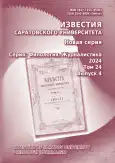The article traces the transformation of the corporeal imagery in the poetry of the thirteen key war-veteran poets, who started writing in the war years and continued to create during the Thaw: O. Berggolts, S. Gudsenko, Yu. Drunina, Yu. Levitansky, A. Mezhirov, B. Okudzhava, N. Panchenko, D. Samoylov, I. Selvinsky, K. Simonov, B. Slutsky, Ya. Smelyakov, A. Tvardovsky. In the course of the analysis six types of corporeal images are revealed in the works of the authors under study: sensor, morbual, mortal, mnemonic, age and gender oriented. The author of the article studies the changes of these images in the post-war poetry caused by reconsidering the issues of life and death, war and peace, memory and forgetfulness, age and generation, love and friendship, epoch and creativity. According to the findings, corporeal imagery in the war years primarily focused on the immediate sensations: cold, hunger, pain, fear, closeness of death, wrath, etc. Sensory, morbual, mortal functions of physicality prevailed. War poetry overcame many taboos of portraying the suffering and resisting flesh. At the same time the corporeal imagery served as an acutely emotional means of confirming the official narrative of fight and victory over the enemy. In the Thaw period the poets, who returned from the war, used the corporeal code for a more in-depth comprehension of the experienced trauma. The mnemonic, age and gender oriented functions of the corporeal images come to the foreground. The body retains the memory of what it has endured, it realizes its age (non-biological) in a new way, it re-discovers its gender identity, senses its mortality. Alongside with this, the sensor, morbual, mortal images, developed during the war, become metaphorized. Pain, shard, wound, cold etc. move from the physical plane to the spiritual one. The war experience enters the conflicting relationships with the new sensory characteristics of a peaceful life and becomes the foundation for the unification of the war generation, searching for their place in the post-war poetry.
 362-370
362-370


 371-378
371-378


 379-385
379-385


 386-394
386-394


 395-403
395-403


 404-411
404-411


 412-420
412-420


 421-426
421-426


 427-433
427-433


 434-442
434-442


 443-450
443-450


 451-457
451-457


 458-464
458-464


 465-477
465-477


 478-482
478-482











